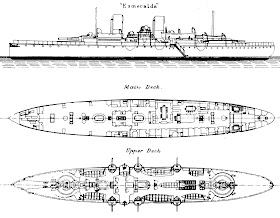Recently, Nick Huband fought an Egyptians vs. Nubians Fast Play 3 x 3 Portable Wargame using a modified version of Mark Cordone’s Ancients adaptation of the rules for a 6 x 6 squared grid.
The battle report:
In the 8th year of his reign the Divine Senusret set out on an expedition to subdue the wretched Kush. This is an account of his victory:
The Egyptians gained the initiative in the first turn and stood fast relying on their archery to wear the Nubians down. They scored 3 hits, but the Egyptians elected to absorb the hits rather than retreating as the Nubians only hope was to get to close quarters. The warband charged home on the central Egyptian archers using the +1 bonus to contact. In the ensuing melee both sides took a hit with Pharaoh luckily avoiding getting hurt. This was enough to wipe out one of the warbands which had already suffered 1 hit from the bows.
On the second turn the Nubians took the initiative and fired on the Egyptians causing one hit on the spears. On the Egyptian's turn, the spearmen charged the light infantry who, taken by surprise, were unable to evade and suffered one hit and had to retreat. Against the other unit of spearmen the Nubians also doubled their score and wiped the spearmen out.
In the centre the melee continued with the two units backed up by their respective leaders clashing first. An additional modifier was applied in the melee, the difference in strength between the units. The Egyptians threw 6 and the Nubians 5. The Nubians had expended their charge bonus during the last turn, there was no difference in SPs, but the Egyptians gained +1 for having a unit in support. The Egyptians however suffered a -1 modifier being bowmen. The result was that the Nubians lost (just!) and the warband suffered 1 hit. The unit, already having lost 1 SP, was eliminated and the Nubian chief, having thrown a 3 was killed with his men.
At this point the Nubians had lost 8 SPs and fled the field.
Conclusion:
The odds were in the Egyptian's favour but if the pell mell charge by the Nubian warband had succeeded in killing Pharaoh, the Nubians might have won. The massed archery worked well but it was a close run thing!
The rule changes:
Because the 3 x 3 board is smaller than the 6 x 6 board used in Mark Cordone’s rules, the following changes were made:
- Bows had a range of 4 grid areas.
- Nubian warband was rated as barbarians.
- The remaining Nubian infantry was rated as light infantry.
- During activation, only 1 activation point is expended to move all the units in a grid area if they are all moving into the same new grid area.
The initial starting positions. The Egyptians are on the left and the Nubians are on the right.
Massed Egyptian archers. The Pharaoh has taken up a position just behind them.
The Kush (Nubians).
The Egyptian camp ... with all the comforts of home!
The Nubian encampment.
The Egyptian archers and Nubian warbands clash.
The critical clash!
The Nubian army is broken and flees from the battlefield.
Please note that the photographs featured above are © Nick Huband.




















































